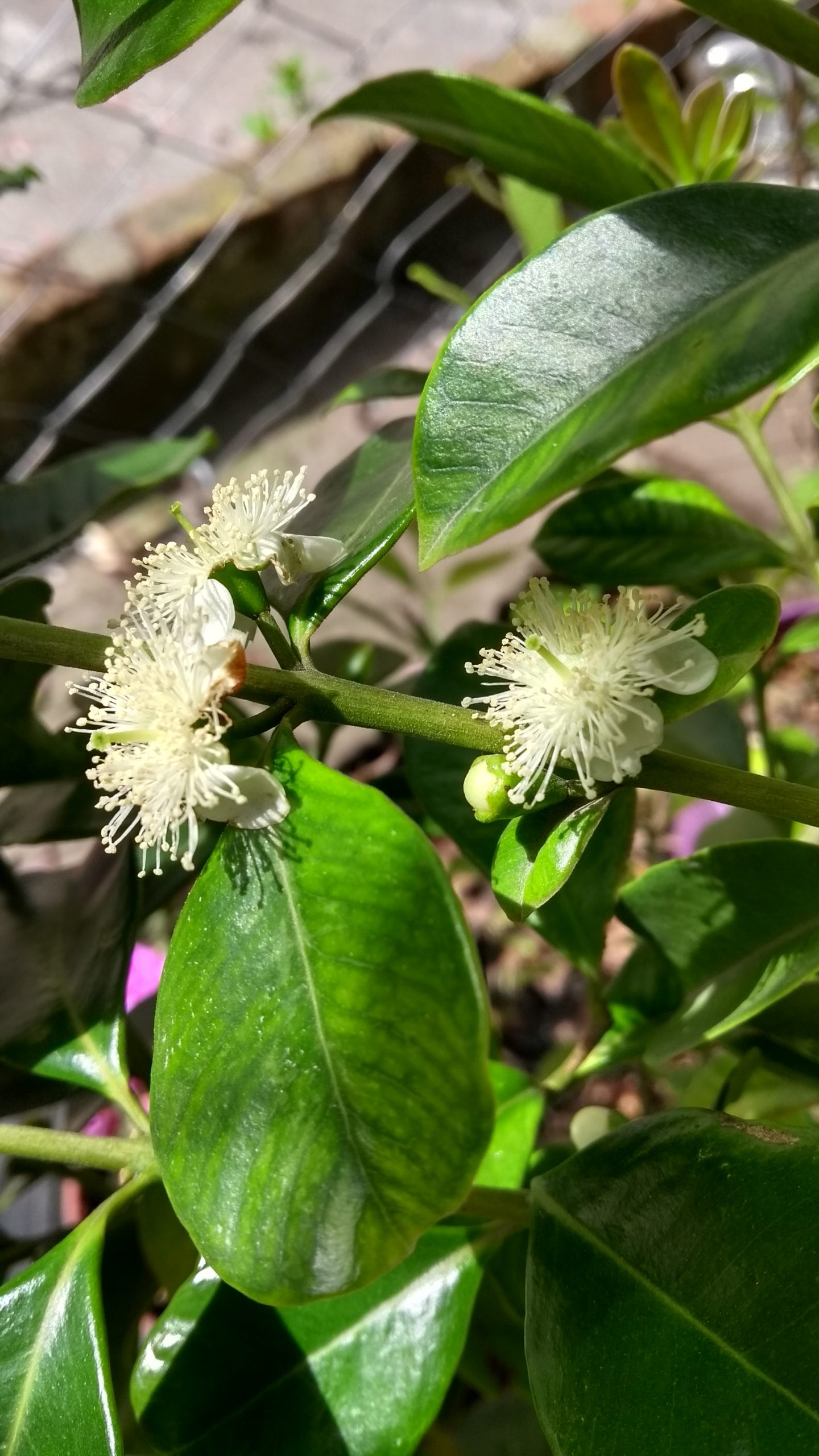Psidium cattleianum, var lucidum is a great sweet and acidic fruit.
In 2012 we bought several psidium cattleianum plants in a nursery of Entre Rios, we thought they were red because red variety is the most common, and the owner of the nursery never clarified the final color of the fruit. A few months ago we bought 10 more for the food forest project, thinking they were the red ones…
One of the original plants, 3 years old, was at my parents house and flourished before the other 3 in the last spring because she poted it in a larger pot, I did it later and now I also have some interesting fruits ;-).
This is our red variety:

That was a surprise to find the first yellow fruit on the ground , in a plant of my mother . She called me and told me he found a “yellow arazá” on the floor, I said, surprised, that surely would have that variety, not the red as expected, because the red species does not turns yellow at any stage.
A red species turning from green to red:

As I read on the internet, yellow variety or lucidum is the most valued. When I went to the plant, I saw some yellow fruits, and even another at the floor, then we tried 3 fruits, which were very tasty, with a hint of acid taste and a reminiscent lemon flavour, certainly without their unbearable acidity.


Then, it’s the only fruit I know who taste as lemon and is edible out of hand. The seeds do not bother me much, it was difficult to discover them in the mouth, but the sweetest part is near them.
I liked as much as my p. cattleianum var sabine or ” strawberry guava”, would not call it superior or inferior, love both fruits because I like acidic fruits. Our red variety is great too, reminds me of a cross between strawberries and plums.
The funniest of all is that before we knew we had the yellow variety , I went crazy collecting and sowing seeds of “lemon guava” and was very sad and concerned that only a few out of 200 seeds had prospered. Anyway, there are two more varieties of this species in small pots growing strongly, which excites me because I will love to try them.
It is a fruit to eat daily with great potential for preparation of juices , jams , jellies , ice cream and pastries in general.
Actualizado, 8 feb 2014
Al final, tal como sucede últimamente, vengo a descubrir que los frutos no estaban correctamente maduros, el arbusto los había soltado antes de tiempo: cuando llegan a su estado ideal son amarillos, no casi amarillos.
Tal como se ve en las fotos, este fruto está bien:







